You are here
Federal Deficit and Debt: March 2023
Every month the U.S. Treasury releases data on the federal budget, including the current deficit. The following contains budget data for March 2023, which was the sixth month of fiscal year (FY) 2023.
Current Federal Deficit
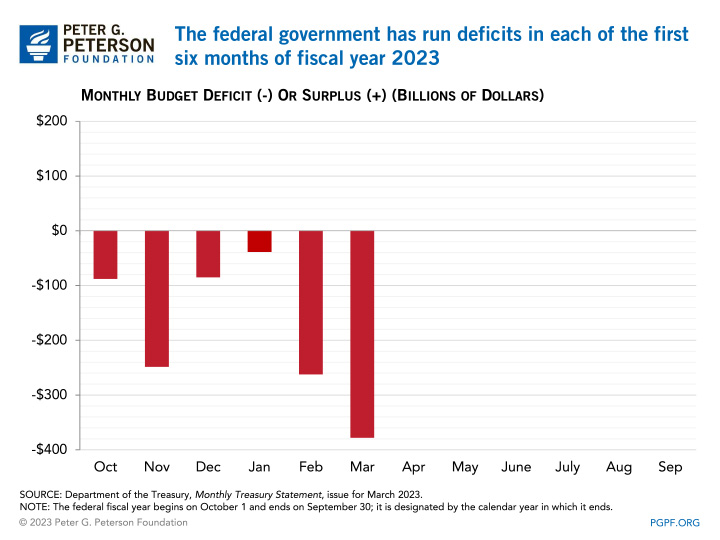
- Federal Budget Deficit for March 2023: $378 billion
- Federal Budget Deficit for March 2022: $193 billion
The federal government ran a deficit of $378 billion in March 2023, a $185 billion change from the deficit of $193 billion that was recorded in March 2022. (Because April 1, 2023 fell on a weekend, certain payments that would have occurred in April were shifted into March, thereby increasing outlays; without that shift, the deficit in March would have been $304 billion.)
Spending was up by $184 billion relative to last year and revenues fell by $2 billion. The largest increases in spending occurred for the Department of Education ($35 billion) as a part of the pause on student loan repayment, and spending by the Federal Deposit Insurance Corporation ($29 billion) stemming from two bank failures. Other categories that saw spending grow by more than $10 billion compared with March 2022 are Medicare, interest on the public debt, Department of Defense, Veterans Benefits and Services, and Social Security. On the revenue side, income and payroll taxes rose by $13 billion; however, that gain was offset by $13 billion decrease in remittances from the Federal Reserve.
Cumulative Federal Deficit
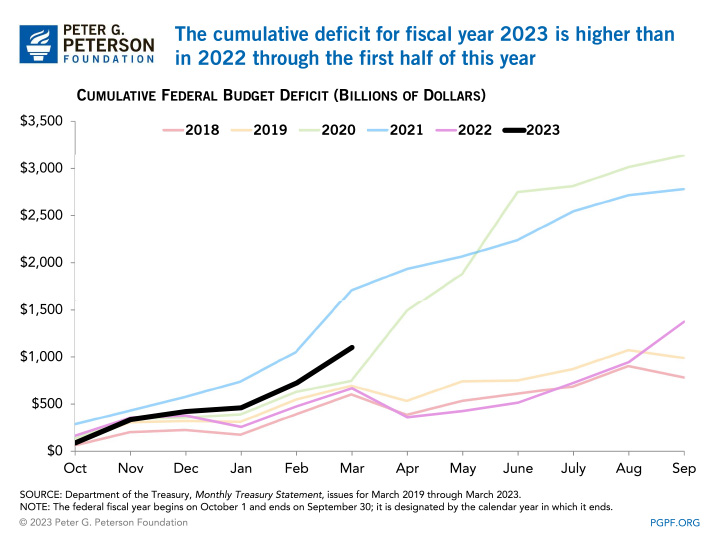
- Cumulative FY23 Deficit: $1.1 trillion
- Cumulative FY22 Deficit: $668 billion
The cumulative deficit so far this year is $432 billion above last year’s level. However, because October 1 fell on a weekend in 2022, certain federal payments were shifted into September, leading to a $63 billion decrease in outlays for this fiscal year. Much of that shift, though, was offset by the shift in outlays from April 1 this year. Without those effects, the deficit for FY23 to date would be $422 billion above last year’s total to date.
For the first six months of FY23, total outlays were $3.1 trillion, $359 billion higher than the same period in the previous year (not accounting for timing shifts). The largest categories of growth in outlays were interest payments ($90 billion higher so far in 2023), a reduction in receipts from the auction of licenses to use the electromagnetic spectrum (which are recorded as offsets to spending and are down by $81 billion), and higher spending for Social Security ($61 billion). Partially offsetting those increases were the expiration of advance payments for the child tax credit (which were recorded as outlays) as well as declines in spending by the Public Health and Social Services Emergency Fund, and by the Small Business Administration.
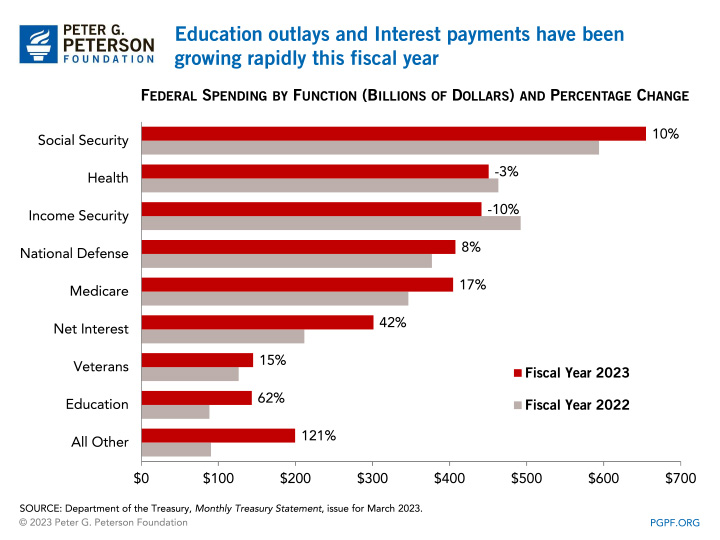
Through the first six months of FY23, total revenues have decreased by $74 billion compared to the previous year. The largest decreases were in individual income taxes, which fell by $95 billion, and remittances from the Federal Reserve, which were down by $60 billion. Partially offsetting those effects was a $62 billion increase in payroll taxes.
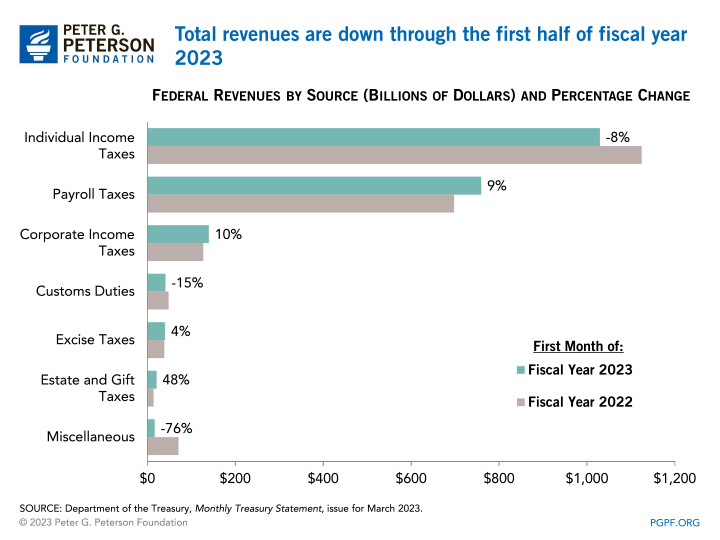
National Debt
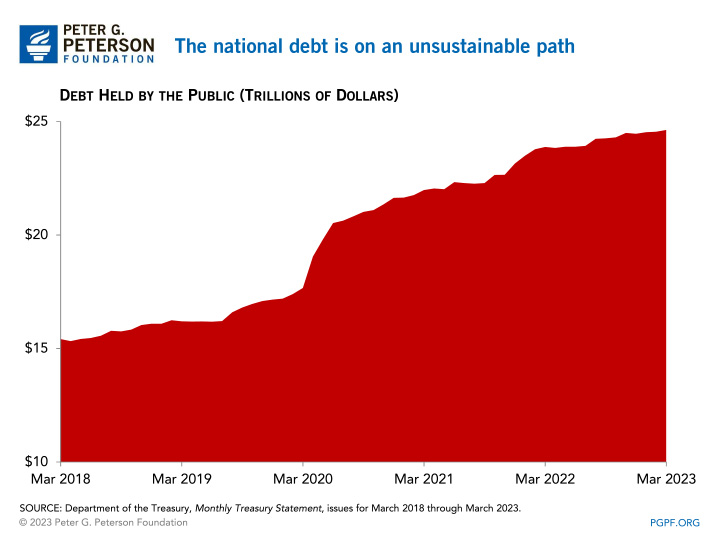
- Debt Held by the Public at the end of March 2023: $24.6 trillion
- Debt Held by the Public at the end of March 2022: $23.9 trillion
Since the financial crisis in 2008, debt held by the public has nearly tripled relative to the size of the economy and is projected to grow even more in the future. Debt and deficits are on an unsustainable upward trajectory. With the new Congress officially in session, legislators are encouraged to work with the Biden Administration to create bipartisan solutions to improve the country’s fiscal outlook.
